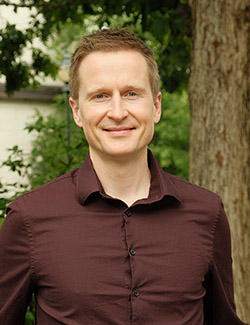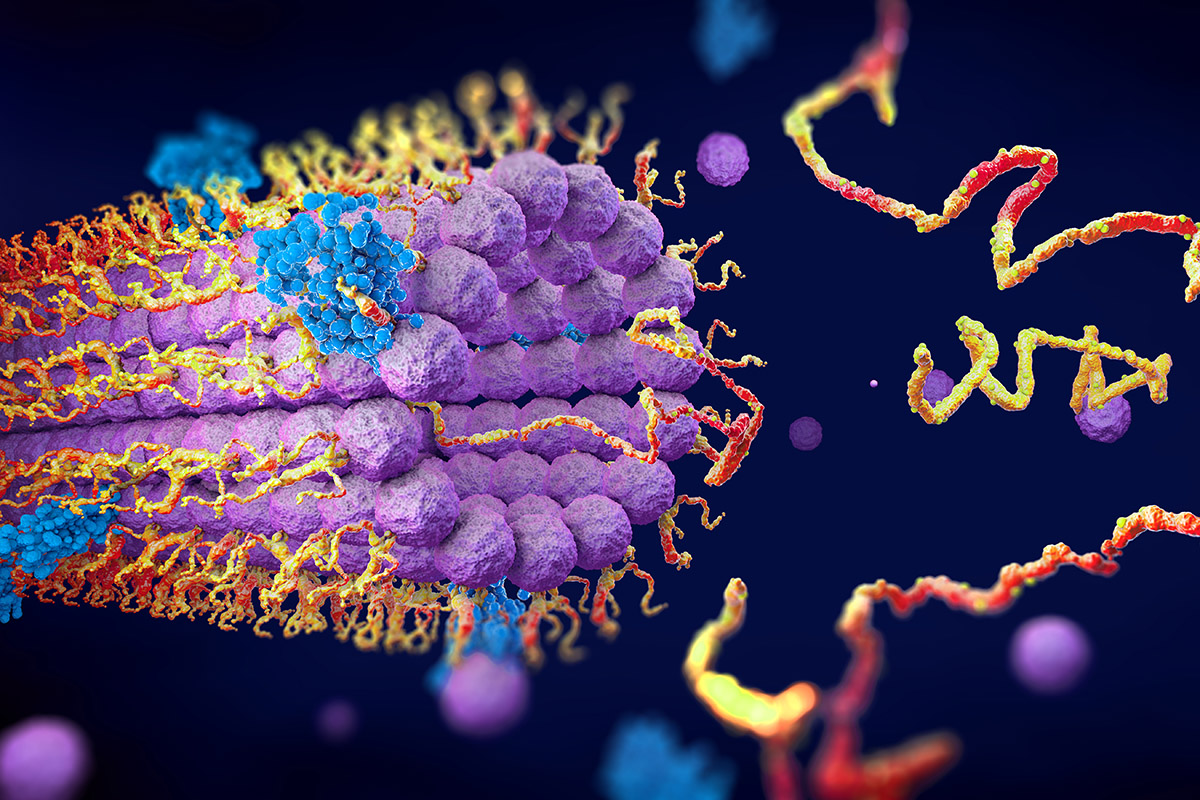As artificial intelligence (AI) and core sciences like math and chemistry become increasingly intertwined, how do we ensure they grow not as parallel pursuits, but as partners in discovery?
Discussing how the mathematical and physical sciences (MPS) — including mathematics and statistics, physics, astronomy, chemistry and materials science — can both contribute to and benefit from the future of AI recently brought together a group of leading scientists at a three-day workshop at the Massachusetts Institute of Technology (MIT). The workshop was funded by MIT and the National Science Foundation (NSF) award 2512945.
Among the organizers was Lars Ruthotto, professor of mathematics in the Emory College of Arts and Sciences, who co-authored a new white paper that shares insights from the workshop and follow-up discussions. The paper explores how AI can accelerate research in MPS fields and how these disciplines, in turn, can impact the development of new AI methods and tools. Ruthotto shares details about the vision behind the paper, the opportunities it outlines and what success might look like in the years ahead.
What was the strategic intent behind the paper, and what motivated you and your colleagues to put it together now?

Lars Ruthotto, professor of mathematics, Emory College of Arts and Sciences
The paper outlines key opportunities to strengthen the link between AI and science. What are those activities?
Consider generative AI: techniques originally developed for consumer image and video generation are now being adapted for scientific image processing. But scientific applications have more diverse data types and demand more rigor. We can’t accept hallucinations in protein folding predictions or astronomical surveys. Therefore, we must advance the science of AI to understand why AI models work and why they fail.
Science also provides tough benchmark problems for AI. One reason AI labs are working on math problems now is because they see it as a stepstone to general AI. Also, math and statistics are the foundation of AI, and the fruits of decades of investment in basic research are beginning to pay off but more research is needed to close the gap between theory and practice.
Can you give an example of bidirectional research between AI and MPS?
AlphaFold is a good example. Decades of MPS research, including data sets, experiments and computational chemistry simulations, led to academic questions about how proteins fold. Then developers used the data and insights from past research to build an AI model that could answer these questions better than a human. Now AlphaFold is changing the way people do research in those areas.
Another good example is diffusion models, the technology behind tools like DALL-E and Stable Diffusion. These weren’t invented by tech companies alone. The foundations came from theoretical chemistry and statistical physics, specifically from concepts like non-equilibrium thermodynamics and stochastic processes used to simulate molecular motion. Now those same models are coming back to science for protein design and materials discovery. It’s a perfect illustration of the mutual benefit: physics gives us the mathematical framework, AI turns it into a powerful tool and science gets new capabilities.
On the other hand, math and statistics help us understand AI. Right now, we don’t yet know exactly how AI works. AI may push us to find new fields within mathematics to study these techniques.
What do you see as the most transformative AI applications in MPS?
It’s very hard to make predictions about AI, which is moving fast. AI helps mathematicians move beyond simple computation to formal proof verification. Interactive theorem provers can rigorously check mathematical arguments with absolute certainty. AI can suggest proof strategies for large search spaces that are impossible for humans to fully explore. But mathematics is also helping us understand AI itself by providing the rigorous framework needed to explain why these models work. Many AI labs now see mathematical reasoning as the ultimate test of AI.
In astronomy, the Rubin Observatory will generate an overwhelming data stream and AI systems will be essential to analyze the data. We need intelligent triage systems that can identify scientifically interesting outliers, synthesize contextual information from archives and literature and autonomously flag candidates worthy of immediate follow-up based on their potential for discovery. This moves beyond automation to genuine AI-assisted scientific reasoning.
One opportunity mentioned in the paper is broadening AI education and workforce development. What does AI literacy look like in practice for a university community?
We identified a need for AI literacy at multiple levels. A chemist should recognize when a problem is suitable for AI versus classical approaches, and how to critically evaluate AI outputs for issues like hallucinations. A mathematician may need to understand the theoretical foundations underlying machine learning algorithms. And faculty need modular, stackable training programs that fit their time constraints: short workshops, sabbaticals in AI groups or stackable credentials they can build over time. This isn’t about making everyone a computer scientist; it's about basic AI literacy with domain-specific add-ons.
What strategic priorities do you hope funding agencies take from this paper?
It’s an exciting time for AI and MPS. We emphasize the need to invest in both AI-focused but also basic research. Many of the enabling techniques in AI were done decades ago without obvious links (at the time) to AI. Don’t put all your eggs in the AI basket; fund basic research to keep the innovation cycle going.
We also advocate for funding interdisciplinary, scalable AI infrastructures including computing resources, data archiving and the creation of software pipelines.
What would success in AI and MPS research look like 10 years from now?
Success would be cracking open the black box of AI using concepts from fundamental science to build even better AI models. Solving some of the big issues in AI, like reducing energy consumption and tackling bias in decision-making, would also be a big win. And more scientific discoveries like AlphaFold or diffusion models would further advance the field. If incentives, funding and resources are targeted toward building a mutually beneficial bridge between MPS and AI research, innovation and discovery will follow.

